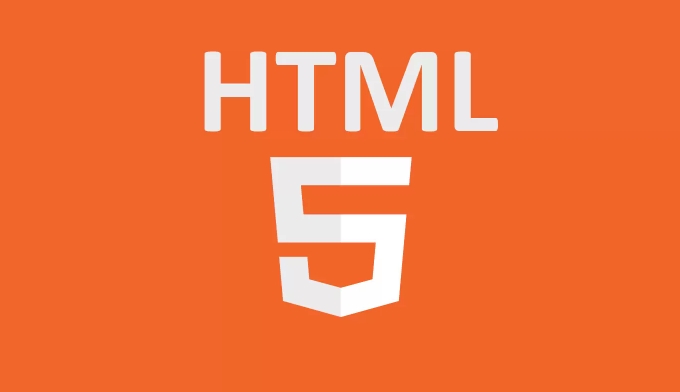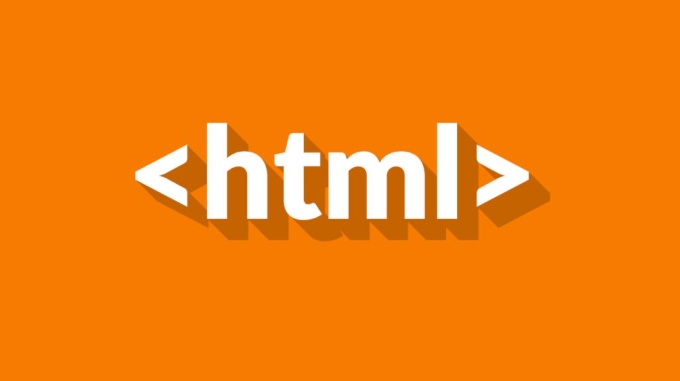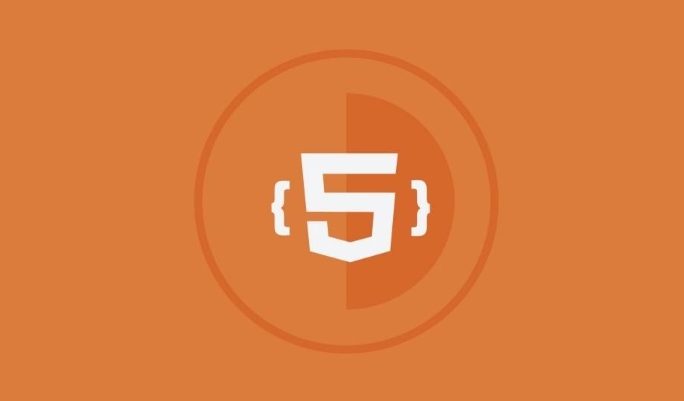HTML5 introduced new semantic tags to improve webpage structure and accessibility. 1. <header> defines introductory content or navigation. 2. <nav> contains major navigation links. 3. <main> holds the unique, primary content of a page. 4. <article> represents self-contained content like blog posts. 5.

HTML5 introduced a bunch of new tags that make web development more semantic and organized. These tags help browsers, search engines, and developers better understand the structure of a webpage without relying too much on generic divs and classes.

Here are some of the most commonly used HTML5 tags you’ll see in modern websites:

1. <header></header>
This tag is typically used at the top of a page or within a section to introduce content — like site navigation, logos, or introductory text. It doesn’t have to be the very top of the whole page; it can also be used inside a <section></section> or <article></article>.
For example:

<header>
<h1>My Website</h1>
<nav>
<ul>
<li><a href="#home">Home</a></li>
<li><a href="#about">About</a></li>
</ul>
</nav>
</header>2. <nav>
The <nav> element defines a section of navigation links. It’s useful for menus, tables of contents, or any major block of links. Screen readers and search engines use this to skip or index navigation areas.
You’ll usually find it inside <header>, but not always.
3. <main>
This tag represents the main content of the document — the unique part that isn’t repeated across pages (unlike headers or footers). There should only be one <main> per page, and it shouldn't be nested inside other elements like <header>, <footer>, or <aside>.
4. <article>
Use <article> when you want to define a self-contained piece of content that could stand alone — like blog posts, forum entries, or news articles.
Example:
<article> <h2>Blog Post Title</h2> <p>This is the content of the article...</p> </article>
5. <section></section>
A <section></section> groups related content together. Think of it like a thematic break in the page. You might use it to divide different parts of your homepage: features, testimonials, contact info, etc.
It’s often confused with This tag is for content indirectly related to the surrounding content — think sidebars, pull quotes, or additional info. It’s commonly used beside an Just like You can actually have multiple Some other useful HTML5 tags include: These tags don’t change how a page looks visually by themselves, but they do improve the accessibility and SEO of your site. Browsers support them well now, so there's no reason not to use them. Basically, HTML5 gives you more meaningful tools to build structured, readable webpages. Once you get used to using semantic tags, you'll find yourself writing cleaner, more maintainable code. That’s pretty much it.<section></section> has semantic meaning, while 6.
<aside>
<article></article> to provide extra context.7.
<footer>
<header></header>, <footer> usually appears at the bottom of a page or section. It typically contains copyright info, author details, or related links.<footer> elements on a single page — one at the bottom of the overall page, and maybe one inside each <article></article> or <section></section>.
<figure></figure> and <figcaption></figcaption> – for embedding media with captions.<time></time> – for marking up dates and times in a machine-readable format.<mark></mark> – for highlighting text.<progress></progress> and <meter></meter> – for visual indicators like loading bars or gauges.
The above is the detailed content of What are the new HTML tags introduced in HTML5?. For more information, please follow other related articles on the PHP Chinese website!

Hot AI Tools

Undress AI Tool
Undress images for free

Undresser.AI Undress
AI-powered app for creating realistic nude photos

AI Clothes Remover
Online AI tool for removing clothes from photos.

Clothoff.io
AI clothes remover

Video Face Swap
Swap faces in any video effortlessly with our completely free AI face swap tool!

Hot Article

Hot Tools

Notepad++7.3.1
Easy-to-use and free code editor

SublimeText3 Chinese version
Chinese version, very easy to use

Zend Studio 13.0.1
Powerful PHP integrated development environment

Dreamweaver CS6
Visual web development tools

SublimeText3 Mac version
God-level code editing software (SublimeText3)
 Applying Semantic Structure with article, section, and aside in HTML
Jul 05, 2025 am 02:03 AM
Applying Semantic Structure with article, section, and aside in HTML
Jul 05, 2025 am 02:03 AM
The rational use of semantic tags in HTML can improve page structure clarity, accessibility and SEO effects. 1. Used for independent content blocks, such as blog posts or comments, it must be self-contained; 2. Used for classification related content, usually including titles, and is suitable for different modules of the page; 3. Used for auxiliary information related to the main content but not core, such as sidebar recommendations or author profiles. In actual development, labels should be combined and other, avoid excessive nesting, keep the structure simple, and verify the rationality of the structure through developer tools.
 Implementing Clickable Buttons Using the HTML button Element
Jul 07, 2025 am 02:31 AM
Implementing Clickable Buttons Using the HTML button Element
Jul 07, 2025 am 02:31 AM
To use HTML button elements to achieve clickable buttons, you must first master its basic usage and common precautions. 1. Create buttons with tags and define behaviors through type attributes (such as button, submit, reset), which is submitted by default; 2. Add interactive functions through JavaScript, which can be written inline or bind event listeners through ID to improve maintenance; 3. Use CSS to customize styles, including background color, border, rounded corners and hover/active status effects to enhance user experience; 4. Pay attention to common problems: make sure that the disabled attribute is not enabled, JS events are correctly bound, layout occlusion, and use the help of developer tools to troubleshoot exceptions. Master this
 Configuring Document Metadata Within the HTML head Element
Jul 09, 2025 am 02:30 AM
Configuring Document Metadata Within the HTML head Element
Jul 09, 2025 am 02:30 AM
Metadata in HTMLhead is crucial for SEO, social sharing, and browser behavior. 1. Set the page title and description, use and keep it concise and unique; 2. Add OpenGraph and Twitter card information to optimize social sharing effects, pay attention to the image size and use debugging tools to test; 3. Define the character set and viewport settings to ensure multi-language support is adapted to the mobile terminal; 4. Optional tags such as author copyright, robots control and canonical prevent duplicate content should also be configured reasonably.
 Best HTML tutorial for beginners in 2025
Jul 08, 2025 am 12:25 AM
Best HTML tutorial for beginners in 2025
Jul 08, 2025 am 12:25 AM
TolearnHTMLin2025,chooseatutorialthatbalanceshands-onpracticewithmodernstandardsandintegratesCSSandJavaScriptbasics.1.Prioritizehands-onlearningwithstep-by-stepprojectslikebuildingapersonalprofileorbloglayout.2.EnsureitcoversmodernHTMLelementssuchas,
 HTML for email templates tutorial
Jul 10, 2025 pm 02:01 PM
HTML for email templates tutorial
Jul 10, 2025 pm 02:01 PM
How to make HTML mail templates with good compatibility? First, you need to build a structure with tables to avoid using div flex or grid layout; secondly, all styles must be inlined and cannot rely on external CSS; then the picture should be added with alt description and use a public URL, and the buttons should be simulated with a table or td with background color; finally, you must test and adjust the details on multiple clients.
 How to associate captions with images or media using the html figure and figcaption elements?
Jul 07, 2025 am 02:30 AM
How to associate captions with images or media using the html figure and figcaption elements?
Jul 07, 2025 am 02:30 AM
Using HTML sums allows for intuitive and semantic clarity to add caption text to images or media. 1. Used to wrap independent media content, such as pictures, videos or code blocks; 2. It is placed as its explanatory text, and can be located above or below the media; 3. They not only improve the clarity of the page structure, but also enhance accessibility and SEO effect; 4. When using it, you should pay attention to avoid abuse, and apply to content that needs to be emphasized and accompanied by description, rather than ordinary decorative pictures; 5. The alt attribute that cannot be ignored, which is different from figcaption; 6. The figcaption is flexible and can be placed at the top or bottom of the figure as needed. Using these two tags correctly helps to build semantic and easy to understand web content.
 What are the most commonly used global attributes in html?
Jul 10, 2025 am 10:58 AM
What are the most commonly used global attributes in html?
Jul 10, 2025 am 10:58 AM
class, id, style, data-, and title are the most commonly used global attributes in HTML. class is used to specify one or more class names to facilitate style setting and JavaScript operations; id provides unique identifiers for elements, suitable for anchor jumps and JavaScript control; style allows for inline styles to be added, suitable for temporary debugging but not recommended for large-scale use; data-properties are used to store custom data, which is convenient for front-end and back-end interaction; title is used to add mouseover prompts, but its style and behavior are limited by the browser. Reasonable selection of these attributes can improve development efficiency and user experience.
 How to handle forms submission in HTML without a server?
Jul 09, 2025 am 01:14 AM
How to handle forms submission in HTML without a server?
Jul 09, 2025 am 01:14 AM
When there is no backend server, HTML form submission can still be processed through front-end technology or third-party services. Specific methods include: 1. Use JavaScript to intercept form submissions to achieve input verification and user feedback, but the data will not be persisted; 2. Use third-party serverless form services such as Formspree to collect data and provide email notification and redirection functions; 3. Use localStorage to store temporary client data, which is suitable for saving user preferences or managing single-page application status, but is not suitable for long-term storage of sensitive information.






